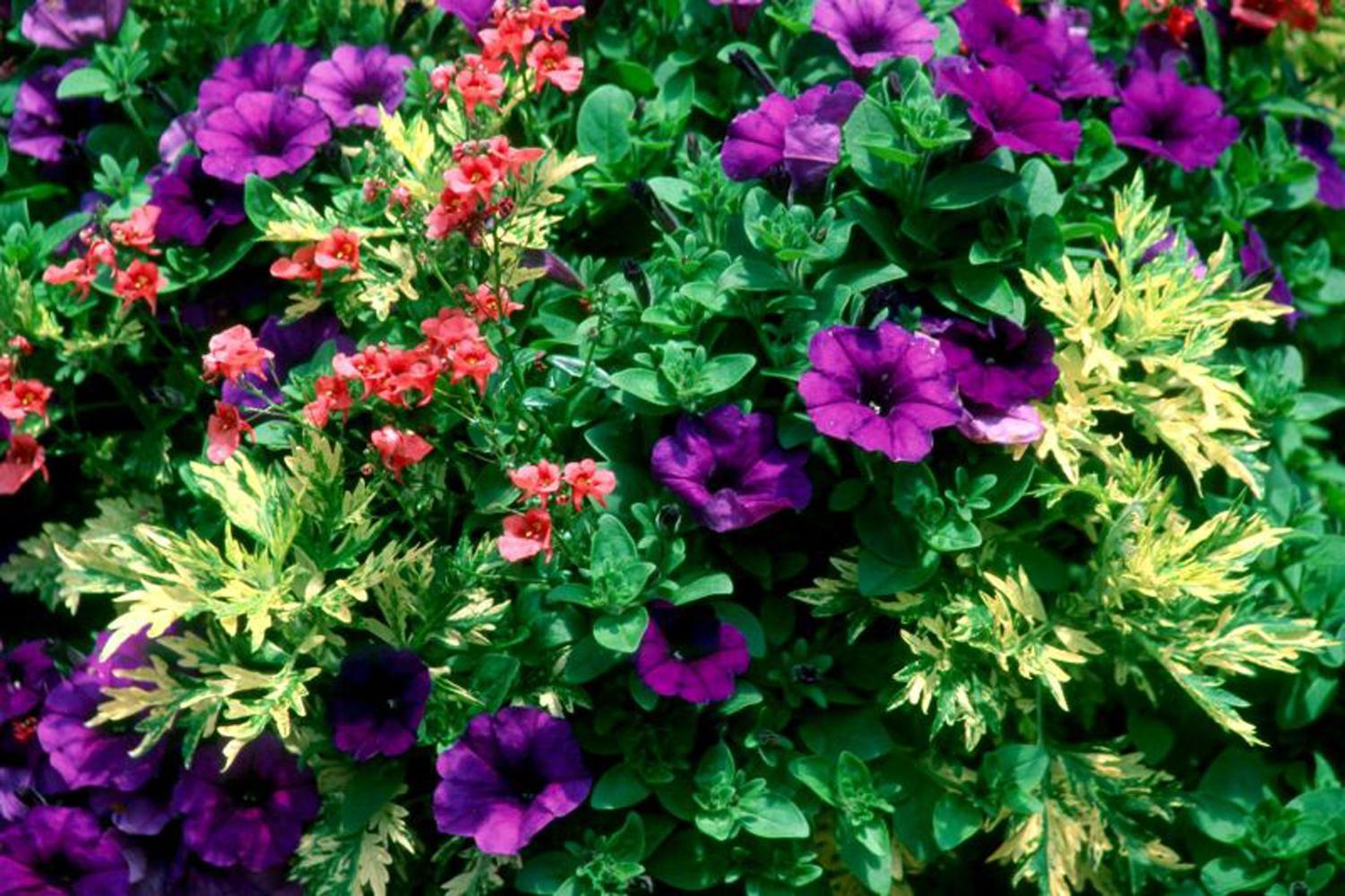Information Possibly Outdated
The information presented on this page was originally released on January 29, 2004. It may not be outdated, but please search our site for more current information. If you plan to quote or reference this information in a publication, please check with the Extension specialist or author before proceeding.
Oriental Limelight captures imagination
By Norman Winter
MSU Horticulturist
Central Mississippi Research & Extension Center
If silver foliage is the first thing you think of at the mention to the word artemisia, you haven't seen Oriental Limelight. This introduction by Proven Winners has really captured the imagination of landscape designers everywhere. It is also an incredible plant for mixed baskets and containers.
Known botanically as Artemisia vulgaris, the Oriental Limelight boasts lime green and creamy lemon-yellow variegation on deeply toothed leaves. As you might guess, one of the common names is variegated wormwood or mugwort. It is native to Europe and Northern Africa eastward to Iran and parts of Siberia. It is perennial in zones 3 through 9.
Oriental Limelight, like other artemisias, is in the Aster family and related to other Southern favorites like yarrows and purple coneflowers.
Oriental Limelight will reach 12 to 36 inches in height and works well in full sun to part shade. It has a self-branching, mounding habit and will definitely catch the eyes of visitors. I'm in the group that likes it best with a little mid-afternoon shade protection. Similar to the silver-leafed artemisias, the water requirements are on the low to medium side.
It certainly doesn't need a luxurious, rich soil, but good drainage is necessary. You'll want to work on tight, heavy soil that you have to chisel or use a pickaxe to break apart. In other words, it is a tough, durable plant, but it's necessary to work the soil and add a little organic matter.
Space plants 12 to 18 inches apart and water thoroughly after planting. Once established, water infrequently but deeply when required. Use only a thin layer of mulch to conserve moisture and keep the soil temperature moderate.
The luxurious-looking leaves cause some gardeners to get off-track a little when it comes to cultural practices. Treat it like you would the silver-leafed Powis Castle: once it becomes a little woody and perhaps spindly, cut it back to rejuvenate growth and create a bushier appearance.
Dividing can be done in the fall or early spring, the latter being my favorite. It is also easy to propagate by cutting.
You can fire up the landscape or containers when you start selecting companion plants for the Oriental Limelight. Showy if not gaudy combinations can be made with blues and violets from petunias like Supertunia, or the new Suncatcher from BallFlora Plant.
Grow Oriental Limelight with the same blue violet color of perennial verbenas like Babylon, Tapien or Mississippi Medallion award-winning Biloxi Blue.
Other great flower partners are gomphrena and salvias like Victoria Blue or Indigo Spires. Don't be afraid to try the Oriental Limelight in rock gardens or combine with other colorful-foliaged plants like Purple Heart and Purple Knight alternanthera.
There is not a better time in history to be a gardener. You never know what will be unloaded at the garden center the day you arrive. If you are lucky this spring, it might even be the Oriental Limelight artemisia.



